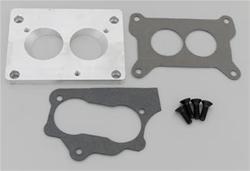Three years and 15,000 miles ago, I installed EFI on the wife's 63GT. It had been trouble free, but this past summer began to bog a bit under heavy throttle. It seemed to be getting worse, so recently I did some reading on the internet about possible causes. I decided to start with the cheapest and easiest first, and picked up an o2 sensor at FLAPS, for $18.95, on the way home from work today. After supper, I installed the o2 sensor in about 15 minutes. Later took it out for a drive, and the bog is GONE.
Can't say enough positive about EFI on a Stude. I can live with an $18.95 part every three years or so. Especially if I can buy it over the counter at FLAPS
Can't say enough positive about EFI on a Stude. I can live with an $18.95 part every three years or so. Especially if I can buy it over the counter at FLAPS




 CASO Alert
CASO Alert


Comment